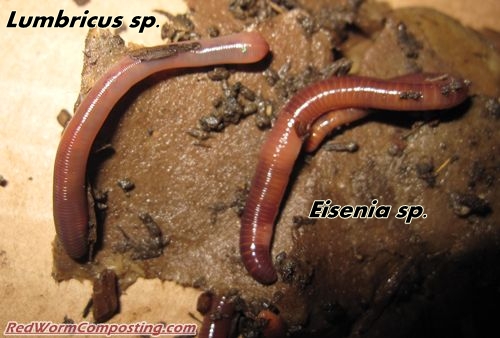Comprehending the Conveniences of Red Wiggler Composting: How This Efficient Method Transforms Organic Waste Into Nutrient-Rich Soil Amendments
Red Wiggler composting, utilizing the types Eisenia fetida, provides a compelling strategy to organic waste management, converting kitchen area scraps and backyard debris right into useful dirt modifications. This method not only enhances soil fertility however likewise addresses pushing ecological worries, consisting of landfill waste reduction and greenhouse gas emissions. As we check out the intricacies of this process, the diverse benefits it uses might expose unforeseen insights into lasting techniques and ecological balance. Recognizing these measurements may trigger a reevaluation of exactly how we regard waste and its potential contributions to a healthier world.
What Are Red Wigglers?
Red wigglers, medically referred to as Eisenia fetida, are a varieties of earthworm that play an essential role in vermicomposting systems. These worms are characterized by their reddish-brown shade, segmented bodies, and a distinct capacity to prosper in organic-rich atmospheres, making them perfect for composting applications - Red Wiggler Composting. Unlike their garden-dwelling equivalents, red wigglers favor to populate the upper layers of dirt, where decomposing issue is plentiful
Usually measuring in between 3 to 4 inches in length, red wigglers have a high reproductive price, enabling them to increase rapidly under ideal problems. They possess an unique gastrointestinal system that allows them to refine natural waste effectively, transforming it into nutrient-rich spreadings, which are highly helpful for plant growth.
Their resistance to differing moisture levels and temperature ranges even more enhances their energy in vermicomposting arrangements, making them a popular option among composting fanatics. In addition, red wigglers are aerobic microorganisms, which demands a well-aerated composting atmosphere, ensuring reliable decomposition. Recognizing the biological attributes and habits of red wigglers is essential for enhancing their use in sustainable waste monitoring techniques.

Advantages of Vermicomposting
Harnessing the power of vermicomposting offers a wide range of ecological and agricultural benefits. First of all, it dramatically reduces organic waste in garbage dumps, consequently decreasing methane exhausts, a powerful greenhouse gas. By drawing away food scraps and yard waste to vermicomposting, we support a more sustainable waste management system.
Additionally, vermicomposting boosts dirt wellness. The spreadings created by red wigglers are abundant in vital nutrients, microorganisms, and enzymes, enhancing soil structure and fertility. This nutrient-rich modification advertises durable plant growth and enhances water retention, decreasing the need for chemical fertilizers.
In addition, vermicomposting fosters biodiversity in the dirt ecosystem. The intro of valuable microbes from worm spreadings aids in disease suppression and nutrient biking, producing a healthier environment for plants.
Economically, vermicomposting decreases the costs connected with chemical inputs and waste disposal. Farmers and garden enthusiasts can cultivate top notch fruit and vegetables at lower expenses, contributing to food protection and sustainability.
Just How to Begin Composting
Starting a composting endeavor can be a straightforward and fulfilling procedure. To begin, pick an appropriate location that is well-drained and obtains partial sunlight. This will certainly assist maintain a well balanced temperature, crucial for the composting procedure. Next, pick a garden compost bin or develop an assigned location in your garden, ensuring it is easily obtainable for harvesting and including materials compost.
Collect organic products such as kitchen scraps, lawn waste, and shredded paper. Aim for a well balanced mix of 'green' materials, high in nitrogen (e.g., fruit scraps, coffee premises), and 'brownish' materials, abundant in carbon (e.g., dried out leaves, cardboard) A ratio of roughly 2:1 eco-friendly to brownish materials is suitable.
Start layering your products, ensuring appropriate air circulation by turning the heap routinely. This advertises cardiovascular disintegration, reducing odors and speeding up the process. Screen wetness degrees; the garden compost needs to feel like a moist sponge yet not extremely damp.
Nutrient Profile of Vermicompost
Composting, specifically with red wigglers, generates a nutrient-rich item understood as vermicompost. Furthermore, it offers micronutrients like magnesium, calcium, and iron, promoting robust plant growth and boosting soil health.
The microbial task existing in vermicompost additionally enriches its account, presenting useful bacteria and fungis that advertise nutrition availability and uptake in plants. This organic element aids in subduing plant illness and improving dirt structure, leading to boosted water retention and aeration.

Environmental Influence of Composting
The environmental effect of composting, particularly with using red wigglers, is extensive and diverse. This technique significantly minimizes the quantity of organic waste sent out to land fills, which in turn minimizes greenhouse gas emissions, especially methane-- a powerful contributor to climate modification. By drawing away organic materials from garbage dumps, red wiggler composting not just helps alleviate ecological degradation however likewise advertises lasting waste management methods.

Moreover, composting contributes to carbon sequestration, as the process captures carbon dioxide from the atmosphere and stores it in the soil. This natural procedure help in combating environment change while improving the soil - Red Wiggler Composting. In general, red wiggler composting presents a practical, environment-friendly option for waste administration and environmental sustainability, promoting healthier ecosystems and a much more sustainable future
Conclusion
In verdict, Red Wiggler composting serves as a reliable method for converting natural waste into beneficial soil modifications. The process not just improves soil fertility and framework yet also reduces environmental issues linked with waste disposal.
Red Wiggler composting, using the types Eisenia fetida, offers an engaging strategy to organic waste administration, transforming cooking check out here area scraps and lawn particles into useful soil changes. Unlike their garden-dwelling equivalents, red wigglers choose to live in the upper layers of soil, where rotting matter is plentiful.
The spreadings produced by red wigglers are abundant in important nutrients, germs, and enzymes, improving soil framework and fertility. The nutrient-rich results of red wiggler task improve soil look here framework, rise water retention, and promote biodiversity within the soil environment.In verdict, Red Wiggler composting serves as an efficient technique for transforming organic waste into useful dirt modifications.